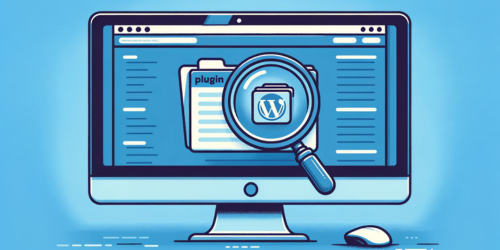Have you ever wondered who’s walking through the digital doors of your WordPress website? It’s a question that echoes in the minds of website administrators and security enthusiasts alike. In the world of WordPress, understanding who accesses your site is not just a matter of curiosity; it’s a crucial aspect of managing a secure and efficient online presence.
User login history in WordPress serves as a digital ledger, a record that holds key insights into user behaviors, access patterns, and potential security vulnerabilities. This information is not just data; it’s a roadmap to understanding the interactions on your site. By monitoring who logs in, when, and how often, you’re not only fortifying your website’s security but also tailoring the user experience to meet the needs of your audience.
In essence, tracking user login history is akin to having a vigilant sentinel, offering a panoramic view of your site’s access landscape. This overview provides a potent mix of security oversight and user management, two pillars that uphold a well-managed WordPress website.
Key Takeaways
- The article will encompass user login history tracking in WordPress, focusing on the implementation, benefits, and tools.
- Aimed at WordPress administrators seeking to enhance site security and user experience.
- Coverage will be detailed yet concise, avoiding jargon and repetitions.
1. Understanding User Login History in WordPress
In the realm of WordPress, user login history is more than just a log of usernames and timestamps. It’s a comprehensive record that reveals patterns, preferences, and peculiarities of user interactions with your site. This history plays a crucial role in several aspects:
- Monitoring: It allows you to keep an eye on who is accessing your website and when, providing a clear picture of user engagement.
- Auditing: Auditors use this data to verify the security and integrity of user interactions, ensuring compliance with various standards and policies.
- Behavioral Insights: By analyzing login patterns, you can gain invaluable insights into how users interact with your site, helping to tailor the user experience to their needs.
For further reading on the relevance of user login in WordPress, WPPedia provides an extensive knowledge base.
2. Methods for Tracking User Activity
To effectively track user activity in WordPress, two primary methods are widely used:
- Plugins: These are ready-made tools designed to easily integrate with WordPress. They capture a wide array of user activities and store this data for future analysis. Plugins often come with user-friendly interfaces, making them accessible to website administrators of all skill levels.
- Custom Code: For more specific needs, custom coding can be implemented. This allows for tailored data capturing, although it requires a deeper understanding of coding and WordPress architecture.
3. Top Plugins for User Login History Tracking
When it comes to monitoring user login history, several plugins stand out:
- WP Activity Log: This plugin is renowned for its comprehensive tracking capabilities, providing detailed logs of user activities. It’s user-friendly and offers extensive features in both its free and premium versions. Learn more about WP Activity Log without plugin.
- Jetpack: Jetpack’s Activity Log feature is another popular choice. It records a wide range of activities and is particularly known for its integration with other Jetpack features. The plugin is ideal for both beginners and advanced users.
Each plugin has its unique strengths. WP Activity Log offers detailed tracking, while Jetpack provides a more holistic view of site activity. When choosing, consider your specific needs and technical expertise.
4. Setting Up and Using User Login History Plugins
Setting up these plugins is a straightforward process:
- Installation: Begin by installing the plugin through your WordPress dashboard. Navigate to ‘Plugins’, then ‘Add New’, and search for your chosen plugin.
- Configuration: After installation, configure the settings according to your needs. This may include specifying which activities to track and setting up notifications.
- Interpreting Data: Once the plugin is active, it starts logging user activities. These logs can be viewed directly in the WordPress dashboard, offering insights into user behavior and website interactions.
5. Advantages of Tracking User Login History
The benefits of tracking user login history in WordPress are multifaceted, primarily enhancing security and improving website management:
- Enhanced Security: By monitoring login history, you can quickly detect unauthorized access or suspicious login patterns. This proactive approach aids in preventing potential security breaches. Auditing capabilities further strengthen this by providing detailed reports for analysis. For more insights into WordPress security, Wordfence offers valuable resources.
- Improved User Experience and Administration: Understanding user login habits helps in optimizing the website for better user engagement. It also simplifies administrative tasks by providing clear insights into user activity, aiding in decision-making for website improvements.
For an in-depth look at the advantages, WPPedia’s WordPress Security provides comprehensive information on WordPress security and management.
6. Automated Features and User Management
Several plugins offer automated features and enhanced user management capabilities:
- Auto-Logout for Idle Users: Plugins like User Login History Pro Version incorporate an auto-logout feature. This automatically logs out users after a period of inactivity, bolstering site security. Learn more about this feature on the WordPress Plugin Directory.
- Role Specification and Customization: These plugins allow you to specify roles and customize settings for different user groups, enhancing both security and user experience. For instance, administrators can have different access levels compared to subscribers.
7. Common Challenges and Best Practices
While tracking user login history is beneficial, it comes with its set of challenges:
- Data Overload: The sheer volume of data can be overwhelming. It’s essential to focus on relevant data and use tools that provide actionable insights.
- Privacy Concerns: Balancing user privacy with tracking needs is crucial. Always ensure compliance with privacy laws and regulations.
Best practices include:
- Regularly updating plugins to ensure security and functionality.
- Customizing settings to suit your specific website needs.
- Using data responsibly and ethically.
For a comprehensive guide on overcoming these challenges and adhering to best practices, WPPedia’s article is an excellent resource, offering news and tips on all things WordPress.
8. Conclusion: Integrating User Login History for a Secure WordPress Experience
In summary, tracking user login history in WordPress is not just a feature; it’s a necessity for a secure and efficiently managed website. By closely monitoring user activities, site administrators can significantly enhance security through early detection of suspicious behaviors and thorough auditing. Additionally, understanding user interactions leads to improved user experience and more informed administrative decisions.
The use of specialized plugins and custom solutions offers a streamlined approach to gather and analyze this valuable data. While challenges such as data overload and privacy concerns exist, adhering to best practices ensures these issues are effectively managed.
Ultimately, integrating user login history tracking is a step towards fortifying your WordPress site against security threats while optimizing it for peak performance and user satisfaction. Embracing this approach is integral to maintaining a robust, secure, and user-friendly WordPress experience.
9. FAQ Section
Q: How do I see user login history in WordPress?
To see user login history in WordPress, you can use a plugin like ‘User Activity Log’ or ‘WP Security Audit Log’. These plugins track and display login history, including dates and times of user logins.
Q: How do I track logged-in users’ activity in WordPress?
To track logged-in users’ activity in WordPress, install a plugin such as ‘User Activity Log’ or ‘Activity Log’. These plugins record various activities of users on your site, providing a comprehensive overview of user actions.
Q: Does WordPress have an activity log?
Yes, WordPress can have an activity log, but you need to use a plugin like ‘WP Activity Log’ to enable this feature. This plugin creates a detailed log of activities happening on your WordPress site, including user actions. Delve into WordPress activity log without plugin for more insights.
Q: How do I see user login time in WordPress?
To see user login times in WordPress, you can use a plugin like ‘Simple History’ or ‘User Activity Log’. These plugins record and display the exact times users log in to your WordPress site.



